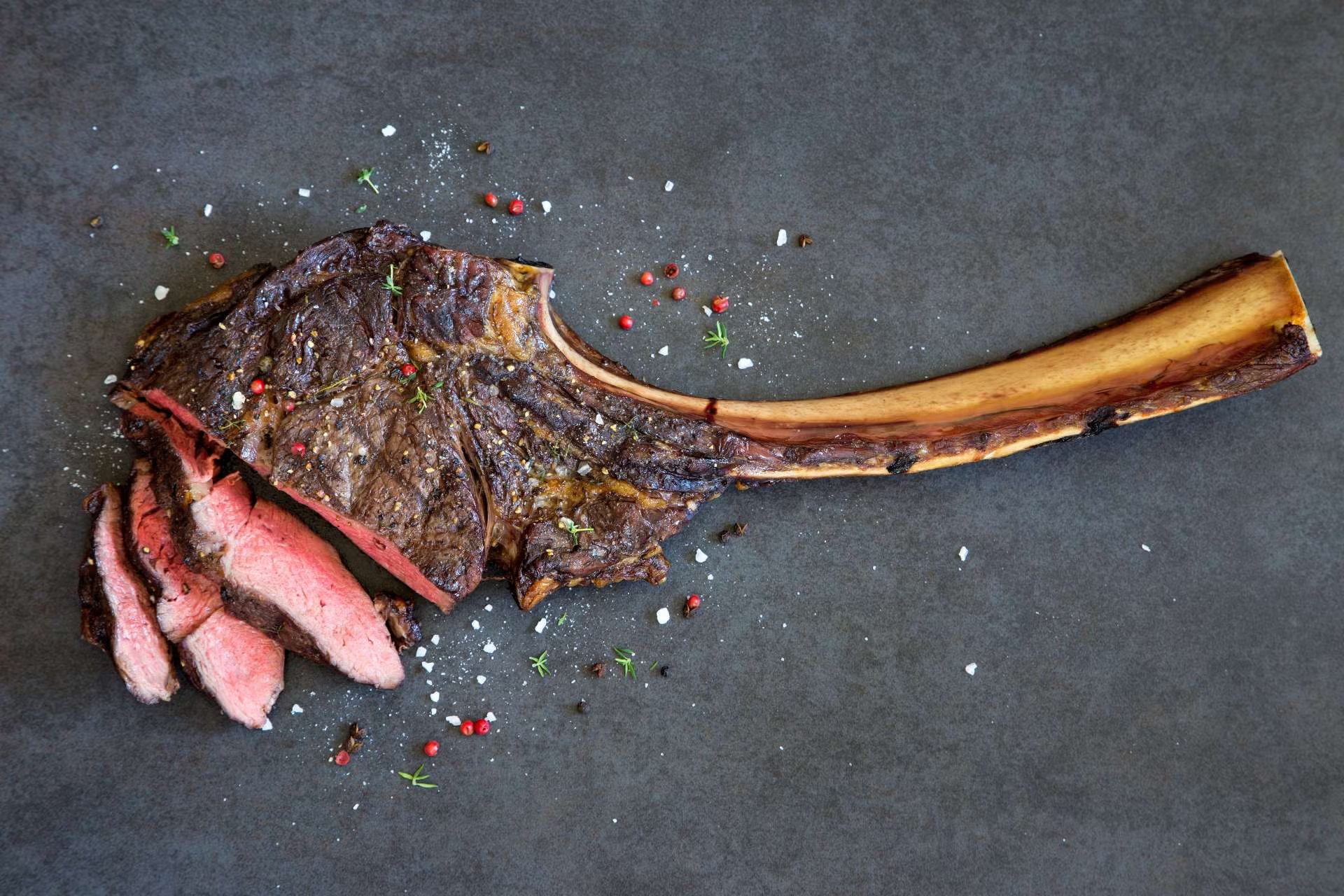Better browning
Getting that perfectly-browned, crispy crust relies on a process called the Maillard Reaction. This occurs when the proteins and sugars in the meat come into contact with the extreme heat of the pan, creating an intensely flavoured layer of golden-brown crispiness.
Before the Maillard reaction can take place, the moisture from the surface of the steak needs to evaporate, and the temperature of the steak itself should be around 300°F (150°C). With a regular sear, the raw steak is placed into the pan, and some of the heat is used in evaporating surface water and raising the internal temperature of the steak.
With a reverse sear, however, the steak has already been heated by the time it hits the pan, and much of the water has evaporated too. This means that almost all of the heat from the pan can be concentrated into creating the ultimate sear.
More even cooking
The gradual increase in temperature during the first stage of the reverse sear means that the heat is evenly-distributed throughout the meat. Because of this, everything cooks at the same rate, and you don’t have to suffer tough, grey edges to be sure that the middle is properly cooked.
More tender meat
Meat contains enzymes called cathepsins, which cause proteins to break down over time, tenderising the meat. During refrigeration, they work extremely slowly, but become much more active when exposed to temperatures of around 122°F (50°C). They stop working again once the meat reaches a certain temperature, and so have little effect on steaks that are cooked only in the intense temperature of a cast iron pan. But because reverse-seared steaks spend longer at that sweet spot temperature of 122°F, the cathepsins are able to break down more proteins in the meat, resulting in a more tender, juicy steak.
How to cook a tomahawk steak
If you want juicy, tender meat that’s cooked to perfection and sealed with the ultimate crispy crust, we’ve got all the lowdown on how to cook a tomahawk steak.












